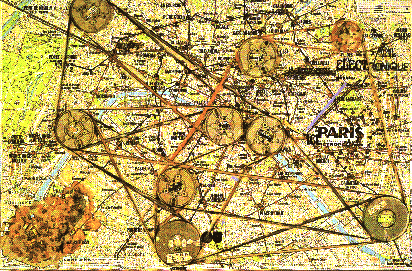

The development of musique concrète by French radio engineer, Pierre Schaeffer (1910-1995), demonstrated a music composed from 'found' fragments of sounds which had been captured on recordings. His work was an electronic realization of the same kind of ideas which been proposed at the beginning of the century by Luigi Russolo with his l'arte dei rumori manifesto. Schaeffer's first works were originally done using specially constructed recording disk players and cutters with pre-recorded material taken from the archives of the French radio [1]. He believed that sounds as concrete sonic events could be separated from the physical acts which created them and then given a new significance by being placed within the entirely different structure of a musical composition. Though Schaeffer's work essentially gave birth to way of working which has proliferated as electro-acoustic music during the last half of this century, Schaeffer himself, has largely recanted his earlier theories about abstracting sounds for compositions and assumed the stance of some of his critics [2].
The development of Musik Electronische particularly in the early electronic music studio in Cologne was also of major significance to the development of text-sound composition. In particular there were the classic pieces which manipulated voice such as Karlheinz Stockhausen's Gesange der Junglinge (1955-56), Luciano Berio's Thema: Omaggio a Joyce (1958), Herbert Eimert's Epitaph für Aikichi Kuboyama (1960-62). These works approached the manipulation of language each from a different point of view, however they made a conscious use of vocal timbre as a parameter within their musical compositions.
Text-sound composers have a somewhat different approach to the use of timbre and sound than electro-acoustic musicians who use the human voice for their primary sonic source. The blurring of these two different ways of working has caused some controversies and confusion. The basic difference lies in the observation that text-sound and sound poetry, emphasize the fact that vocal sounds are created by the body, and that the very act of their creation provides one with the structure for their arrangement. A good sound poem is structured from an internal system of emotional connections rather than an external one.
Notes and References::
1. A four CD set of his work is available, Pierre Schaeffer l'oeuvre musicale intégrale 1948-1979 (Paris: INA.GRM #INA C 1006, 1007, 1008, 1009). On the Internet, there is a short bio/bibliography on Schaeffer compiled by Pierre Bongiovanni as well as another biography on a site at UCS in Indiana.
2. By rejecting musical sounds and
restricting itself exclusively to noises, musique concrète puts
itself into a situation that is comparable, from the formal point of view, to
that of painting of whatever kind: it is in immediate communion with the given
phenomena of nature. And like abstract painting, its first concern is to
disrupt the system of actual or potential meanings of which these phenomena are
the elements. Before using the noises it has collected, musique
concrète takes care to make them unrecognizable, so that the
listener cannot yield to the natural tendency to relate them to sense images:
the breaking of china, a train whistle, a fit of coughing, or the snapping off
of a tree branch. It thus wipes out a first level of articulation, whose
usefulness would in any case be very limited, since man is poor at perceiving
and distinguishing noises, perhaps because of the overriding importance for him
of a privileged category of noises: those of articulate speech... Musique
concrète may be intoxicated with the illusion that it is saying
something; in fact, it is floundering in non-significance. From The Raw
and the Cooked: Introduction to a Science of Mythology, Volume 1, by Claude
Lévi-Strauss, translated by John and Doreen Weightman (New York: Harper
Torchbooks, 1969).
In an interview from 1986, Schaeffer very bitterly states
"...Unfortunately it took me forty years to conclude that nothing is
possible outside DoReMi... I think of myself as an explorer struggling to find
a way through in the far north, but I wasn't finding a way through... There is
no way through. The way through is behind us." From an interview with
Tim Hodgkinson in Re- Records Quarterly Magazine, Vol. 2 No. 1, (March
1987) pp. 5--9. An Internet version of this interview is also
available.